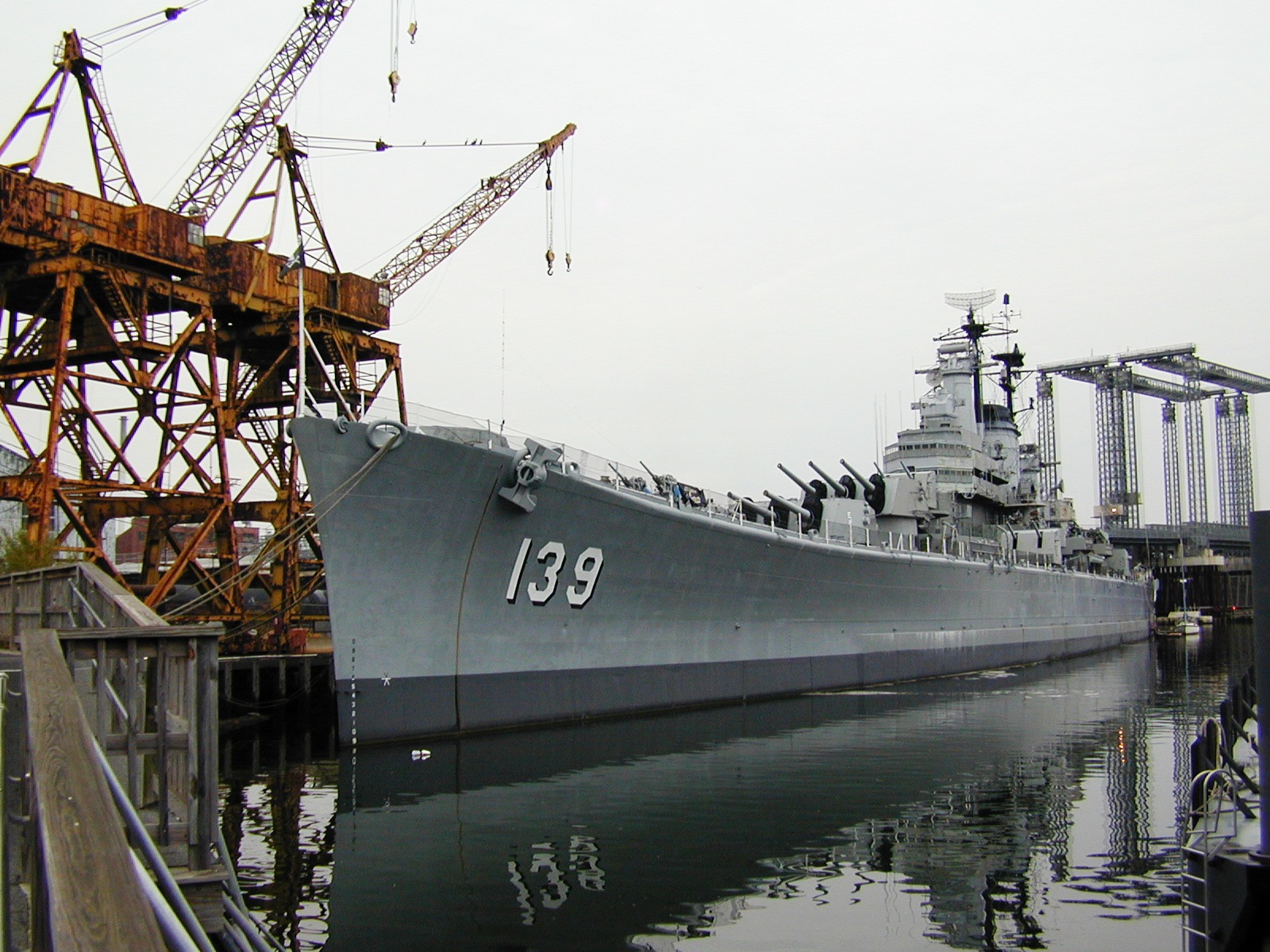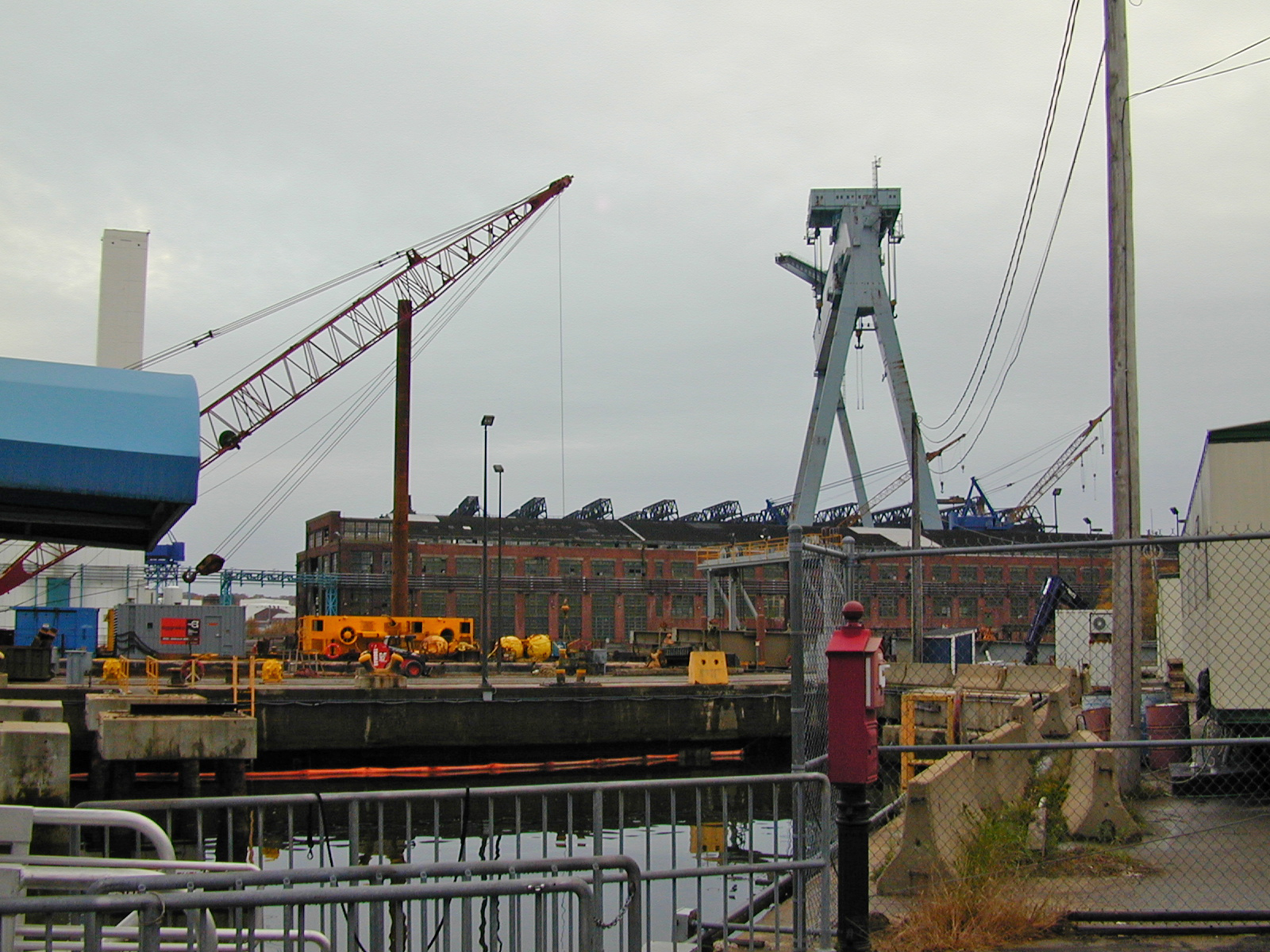
USS Salem, Veterans, Bring Neglected History to Life for Local Students

From AAA Horizons Newspaper
With the creation of the Unity in 1696, the City of Quincy, Mass., first dove into the shipbuilding business. Later, during the dark days of World War II, the city reached its pinnacle as a shipbuilding power when the Fore River Shipyard churned out 121 ships, staking its claim as that era’s greatest shipyard.
To pay homage to the men and women who worked at Fore River — and to Quincy’s role in defeating the Nazis and curbing Communism — former Quincy Mayor Jim Sheets led the effort to create the United States Naval Shipbuilding Museum several years ago. The museum is housed on the USS Salem, a Cold War-era heavy cruiser that is currently quartered at its birthplace, the Fore River Shipyard.
“During World War II, girls were coming out of high school as sophomores to help build ships at the Fore River Shipyard,” says William Anderson, a retiree and former radar man on the USS Salem from 1949-52. “Our home force, especially during World War II, was just as important as our overseas fighting force.”
The Salem (1949-59) was the flagship of the US Sixth Fleet in the Mediterranean and the US Second Fleet in the Atlantic during the Cold War. The Salem and her sister ships, the DesMoines and the Newport News, were heavy cruisers that kept the Soviets bottled up in the Red Sea for 40 years.
The Salem’s more mobile generation bridged the gap between World War II’s lumbering battleships and today’s smaller, quicker guided-missile cruisers, which employ satellite systems to engage in deadly accurate, long-distance (400 miles) warfare.

Quincy's Fore River Shipyard is home to the USS Salem.
The Salem now boasts several memorial/museum areas dedicated to shipbuilding, including the US Navy Cruiser Sailors, the USS Newport News, the USS Saint Paul, the USS Salem, model naval vessels and the US Navy SEALs. The Military History Research Center and Weapons Collection is also housed on the Salem.
“You don’t just see a ship, you see a history of the Navy,” says Anderson. “We were lucky that the Salem was available to bring back home.”
Not only does the Salem provide the public with a taste of living history, but it’s also been transformed into a part-time floating classroom.
“Kids today don’t really know anything about military history,” adds Anderson, a lifelong engineer and volunteer middle school teacher for Northeastern University’s RE-SEED physics education program. “For whatever reason, they get a view of history that essentially omits the military.
“When kids come on board the Salem, they have no idea about World War II, Korea, or the brave men and women who gave their lives for our precious freedom,” says Anderson, who teaches physical sciences to Quincy students on the Salem each Monday.
He also teaches military history and physics to big groups of kids on the Salem’s Overnight Camping Adventures. “We put the kids through Navy drills and activities on the overnight trip,” says Anderson. “They get to sleep in the same bunks that I did, and they learn what the heart and soul of the Navy is all about.”
Visit www.uss-salem.org or call (617) 479-7900.
Post a comment